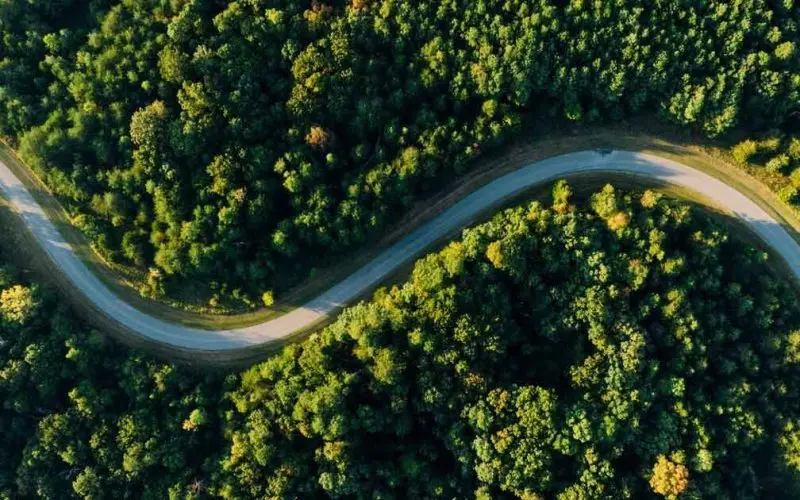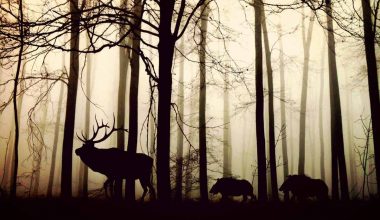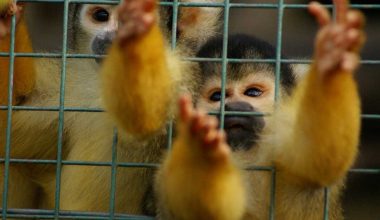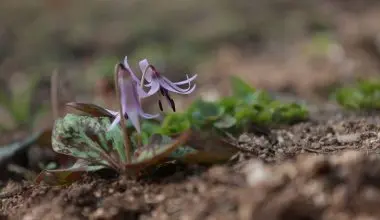Table of Contents Show
A biological hotspot is a region on our planet with high levels of biodiversity (a good variety of plant and animal species) being threatened due to humans starting to live there.
Our planet consists of various species that are building blocks of Earth.
To make it simpler,
Biodiversity-rich areas with high chance of species going extinct, mainly because of humans starting to live there, are said to be biological hotspots.
A crisis of historic proportions due to development, urbanization, industrialization, pollution, and diseases is being faced by us.
Species are going extinct at a rate quicker than mass extinction of dinosaurs.
Originally, 25 biological hotspots used to cover 11.8% of the land surface area of earth. However, since the addition of 11 more hotspots, land surface covered by these hotspots increased to 15.7%.
This 15.7% faced habitat loss of 85% and this number reduced so much that 60% of the planet’s terrestrial life only lives on 2.4% of the land surface area.
Simple Navigation
- List of 36 Biodiversity Hotspots (Classified by Locations)
Importance of Biodiversity Hotspots
These ecological hotspots support more than 15,000 endemic plant species and some of those have lost up to 95% of their natural habitat.
Loss of species at this rate would mean reduced air for us to breathe, food to consume, or even water to drink and utilize.
Humanity would cease to exist! These ecological hotspots are most critical to human survival and sadly, these are the ones most threatened.
Hotspots are among the richest and most important ecosystems on the planet. They are home to numerous vulnerable species whose survival is directly dependent on our actions.
What’s concerning is the fact that biological hotspots support 60% of all plants, mammal, reptile, bird, and amphibian species on the planet!
List of 36 Biodiversity Hotspots
To be classified as a biodiversity hotspot on Myers 2000 edition of the hotspot-map, the region must meet these two conditions:
- Must contain at least 0.5% or 1,500 species of vascular plants as endemic to the area
- There must have been at least 70% loss of its primary habitat
36 ecological hotspots in the world fulfill this criteria and are included in Myer’s list.
Here’s a map that shows distribution of those Global Biodiversity Hotpsots.

Mittermeier RA, Turner WR, Larsen FW, Brooks TM, Gascon C (2011) Global biodiversity conservation: the critical role of hotspots. In: Zachos FE, Habel JC (eds) Biodiversity hotspots: distribution and protection of conservation priority areas. Springer, Heidelberg
The following list is of 36 Hotspots classified according to Continents; followed by 10 Most Threatened Biological Hotspots out there.
North and Central America
These continents play host to thousands and thousands of acres of important habitats.
Examples of such habitats include:
- California Floristic Province
- Madrean Pine-oak woodlands
- Caribbean Island
- Mesoamerica
- North American Coastal Plain
South America
Consists of some of the most diverse life seen on Earth.
- Cerrado
- Tropical Andes
- Atlantic Forest
- Chilean Winter Rainfall-Valdivian Forests
- Tumbes-Chocó-Magdalena
Asia-Pacific
Continent wise, it has the most number of ecological hotspots, with a total of 16 important regions ripe with biodiversity.
- Eastern Himalaya
- Western Ghats, India: Srilanka
- Indo-Burma, India, and Myanmar
- New Caledonia
- New Zealand
- Polynesia-Micronesia
- Japan
- East Melanesian Islands
- Philippines
- Sundaland
- Southwest Australia
- Eastern Australia
- Wallacea
- Aucasus
- Irano-Anatolian
- Mountains of Southwest China
Central Asia
- Mountains of Central Asia
Europe
- Mediterranean Basin
Africa
These eight hotspots hold a diverse array of animal and plant life, many of which are exclusive to these areas only.
- Coastal Forests of Africa
- Eastern Afromontane
- Guinean Forests of West Africa
- Horn of Africa
- Madagascar and the Indian Ocean Islands
- Succulent Karoo
- Cape Floral region
- Maputaland-Pondoland-Albany
10 Most Threatened Biodiversity Hotspots in the world
1. Cerrado, Brazil
The area of Cerrado in Brazil is the largest woodland savannah in South America. It is home to 10 endemic birds that are threatened along with 4,400 endemic plant species.
Some of the unique species found in Cerrado include the giant armadillo, jaguar, and the giant anteater.
The Cerrado hotspot is now only 450,000 square kilometres in size with a reduction from the original 2 million square kilometres before. This occurred due to extensive land clearance for growth of crops to feed animals. Grazing is another major reason for that clearance.
2. Himalayas
The Himalayas cover an extensive region of land including China, Myanmar, Bhutan, Nepal, Himalaya, Bangladesh, and Pakistan.
This hotspot extends to an area of 185,427 square kilometers including various natural landscapes such as mountains, grasslands, alpine meadows, and broadleaf forests.
Only one-fourth of the original area now remains.
The Himalaya hotspot houses incredible species such as tigers, vultures, elephants, and buffalos, but they now face a persistent threat of extinction.
3. Polynesia-Micronesia, Southern Pacific Ocean
The hotspot covers an area of 41,285 kilometers and includes coral atolls, coastal wetlands, savannas, and tropical rainforests.
Conservation international describes Polynesia-Micronesia hotspot as the “epicenter of the present global extinction crisis” with 90 endemic birds being threatened and 25 birds already extinct in the last two centuries as a result of overhunting, invasive species and other reasons of wildlife endangerment.
4. Atlantic Forest – Brazil, Paraguay, Argentina, Uruguay
The hotspots have 20,000 species of plants, out of which 8,000 are endemic to the region. It also has about 950 birds and many other endangered species.
The black-faced Lion Tamarin is among the many species endangered in the Atlantic Forests.
The biological hotspot was once covered with 1.2 million square kilometers, but sadly sugar and coffee plantations have gone on to destroy these forests, leaving behind less than 100,000 square kilometers (8% of the original habitat).
The pressure to provide fresh water supply, cattle ranching, and urbanization have also contributed to the continued ravaging of these forests.
5. Indo-Burma – Myanmar, Thailand, Cambodia, Vietnam, India, China
This hotspot is home to 7,000 endemic plant species that include many other species that are said to be threatened; such as 35 amphibians, 25 mammals, and 10 birds.
Over 2.2 million square kilometers of the original habitat is now lost. This means that only 5% of the habitat remains now.
Even now, new species are being discovered such as the Annamite Striped rabbit as well as the large-antlered muntjac.
6. Philippines, Pacific Ocean
Among the richest area of global biodiversity hotspots are 7100 islands of the Pacific. Only 7% of this habitat is remaining.
By having such extensive coverage over the planet, the ecological hotspot inhabits 6,000 endemic species and an indefinite number of bird species including Cebu flowerpecker and the Philippine Eagle. Vegetation here is mostly tropical and sub-tropical.
7. Madrean Pine-Oak Woodlands, Mexico
Originally, the hotspot was located in the mountainous area and extended up to 461,265 square kilometers across Mexico and also a portion of southern USA.
However, due to extreme logging being carried out has led to an 80% loss of woodland’s original natural cover.
Roughly 4,000 species of endemic plants are left on the Madrean Pine-Oak Woodland, with the ecological hotspot being widely known for being a region consisting of millions of monarch butterflies that seasonally fly around the region.
8. Coastal Forests, Eastern Africa
The biodiversity hotspot that makes up the coastal forests, contains a remarkably high degree of biodiversity extending throughout the thin corridor along with the eastern coast of Somalia, Kenya, Mozambique, and Tanzania.
The area is home to Tana River mangabey, the Tana River red colobus, and the red colobus of Zanzibar. All three of these are said to be highly endangered primates.
The cause for continued degradation and destruction of the area is said to be due to excessive agriculture expansion for farming.
9. Cape Floral Region, South Africa
The Cape floral region is located in the Western Cape and is reported to be the biological hotspot which boasts the planet’s largest concentration of diverse plant species per square-kilometer.
Even the Amazon cannot compare to the Cape floral region, which has about 9,000 diverse plant species and nearly 1,435 of these plant species have now been cited as threatened and about 6,210 are endemic to the region.
The Cape floral region also provides a habitat for cape sugar-bird and geometric tortoise.
10. Mesoamerica
Mesoamerica is located across Mexico, Guatemala, Belize, Honduras, El Salvedor, Nicaragua, Costa Rica and Panama.
Mesoamerica is a biodiversity hotspot that is tropical as well as sub-tropical. The ecosystem is known to be incredibly bio-diverse in terms of endemic mammals, birds, and amphibians. They also host more than 17,000 plant species.
Mesoamerica is habitat to quetzal and the howler monkey.
This ecological hotspot used to be 1 million square kilometers but now has shrunk to only 226,000 square kilometers.
Biodiversity Hotspot Protection Efforts
Here are some of the ways we can protect these biological hotspots:
- Building significant awareness within the society to work on biodiversity, communities, and livelihoods. You can do that by practicing Social Forestry.
- Mainstreaming of biodiversity, communities, and livelihood into development, planning and prioritizing of these hotspots.
- Innovative and strong responses to illegal wildlife trade
- Empowering and creating awareness amongst the community to engage in conservation management efforts
- Safeguard the endemic and priority species by mitigating threats to wildlife endangerment!






